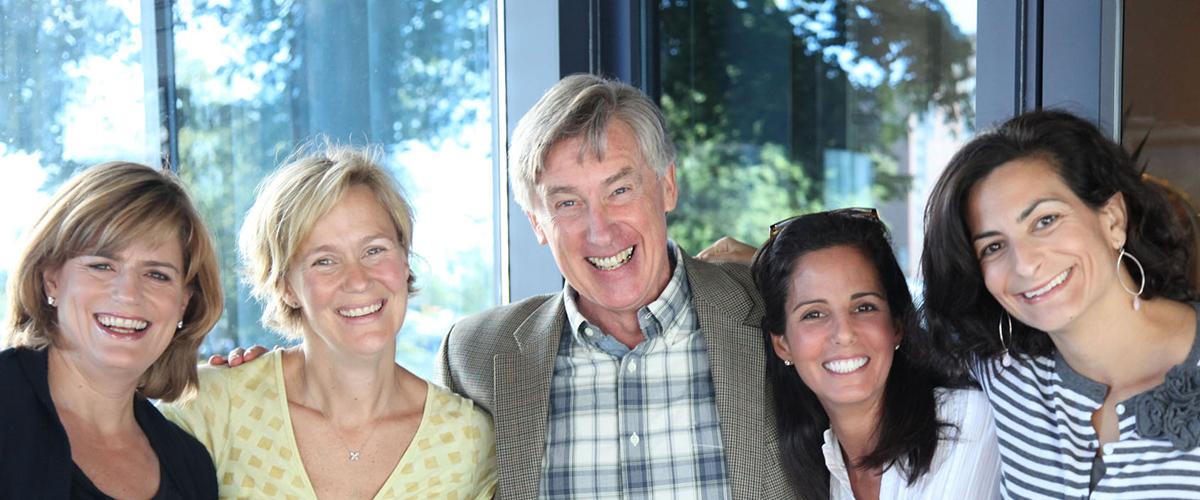Defective Myogenesis: Mechanisms Contributing to Severity of CDM
Prior reports have implicated developmental defects during myogenesis in the pathogenesis of congenital myotonic dystrophy (CDM). Moreover, a recent study has linked a disruption of developmentally regulated RNA alternative splicing in CDM to skeletal muscle pathology (Thomas et al., 2017). Mechanistically, CDM is not simply a more severe phenocopy of DM1 and an understanding of its molecular pathogenesis may provide new insights into CDM-targeted therapeutic strategies.
Mechanism of Myogenesis Inhibition in CDM
Dr. Marcella Simili (Institute of Biophysics, Pisa) and colleagues previously demonstrated alterations in key signal transduction pathways responsible for muscle differentiation in cell lines from DM1 embryos carrying long repeats (3200 CTG) and also provided evidence of autophagy that might be responsible for the severe skeletal muscle phenotype in CDM (Beffy et al., 2010). In a new report (Rizzo et al., 2018) this group examines whether autophagy causally links to abnormal myogenesis and severe muscle deficits in CDM.
The research team conducted electron microscopic and molecular studies of myogenesis in two fetal cell lines, CDM13 and CDM15, with 1800 and 3200 CTG repeats, respectively. They showed that, while both cell lines undergo autophagy, impaired myogenic differential occurred only in CDM15. This finding is interpreted as evidence that induction of autophagy is independent, and thus not a proximate cause, of impaired myogenesis.
Comparisons of myogenic regulatory factor (MYOD and MEF2A) activation and subsequent activation of miRNAs that control muscle differentiation showed their upregulation only in the lower repeat number CD13 line. These data provided additional evidence dissociating autophagy from impaired myogenesis.
Finally, the research team determined that markers of cellular stress and specific interferon (IFN) type 1 pathway induction (upregulation of IRF7, STAT1, OAS1, OAS2, and OAS3) was associated with the abnormal differentiation in CD15 cells, but not in CD13 or control myoblasts. IFN1 pathway induction was exacerbated when myogenic differentiation was induced in CD15. In turn, addition of IFN1 pathway inhibitors (targeted to IRF7 and TLR3) corrected the myogenic defect in CD15 myoblasts.
A Putative Target for a Muscle Therapeutic in CDM?
Taken together, Dr. Simili and colleagues concluded that inappropriate activation of the innate immune response, independent of autophagy, may underlie the impaired myogenesis and severe skeletal muscle pathology that characterizes CDM. They suggest that IFN1 pathway inhibitors might constitute a new therapeutic strategy for CDM.
References:
Disrupted prenatal RNA processing and myogenesis in congenital myotonic dystrophy.
Thomas JD, Sznajder ŁJ, Bardhi O, Aslam FN, Anastasiadis ZP, Scotti MM, Nishino I, Nakamori M, Wang ET, Swanson MS.
Genes Dev. 2017 Jun 1;31(11):1122-1133. doi: 10.1101/gad.300590.117. Epub 2017 Jul 11.
Altered signal transduction pathways and induction of autophagy in human myotonic dystrophy type 1 myoblasts.
Beffy P, Del Carratore R, Masini M, Furling D, Puymirat J, Masiello P, Simili M.
Int J Biochem Cell Biol. 2010 Dec;42(12):1973-83. doi: 10.1016/j.biocel.2010.08.010. Epub 2010 Aug 24.
Activation of the interferon type I response rather than autophagy contributes to myogenesis inhibition in congenital DM1 myoblasts.
Rizzo M, Beffy P, Del Carratore R, Falleni A, Pretini V, D'Aurizio R, Botta A, Evangelista M, Stoccoro A, Coppedè F, Furling D, Simili M.
Cell Death Dis. 2018 Oct 19;9(11):1071. doi: 10.1038/s41419-018-1080-1.

